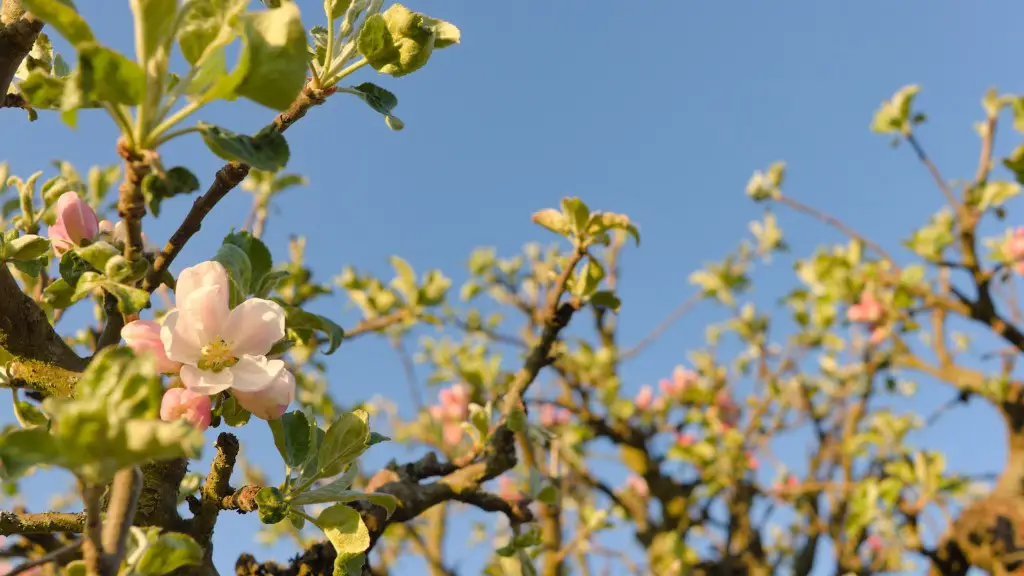It is often mysterious and confusing why apple trees do not bloom. Many factors should be considered when attempting to understand why an apple tree is not blooming. Without adequate information, it may be difficult to determine the exact reason why the apple tree is not blooming. In this post, I will highlight some of the major reasons why apple trees fails to bloom and how they can be rectified.
Poor soil fertility is one of the main reasons why apple trees may not bloom. Apples thrive in well-drained, fertile soil. A soil test is beneficial as it will help identify nutrient deficiencies or soil pH and nutrient imbalance. Soil amendments can be used to correct these issues. A lack of sunlight is another major reason for apple trees failing to bloom. Apples require a minimum of 6-8 hours of direct sunlight and adequate ventilation. Trees in shady locations may fail to produce sufficient flowers for pollination.
If the apple tree is well situated in fertile soil and receives adequate sunlight, then it is likely due to insect infestations or excessive pruning. Insects such as scale, aphids, stink bugs, or mites can damage flower buds and cause the tree to not bloom. These can be controlled with insecticides. Excessive pruning has been known to cause apple trees to not bloom as it removes flower-producing buds. The flowers on an apple tree are produced on spurs that occur on short shoots of the tree on the older wood. Pruning should be limited to remove dead or damaged branches and preserve a balance of vegetative growth and flowering.
Adequate fertilization and soil amendments is important to ensure an apple tree is supplied with the necessary nutrients. Fertilization should be done in late winter or early spring and monitored closely to ensure the optimal balance of nutrients. Horticultural oils, insecticides, fungicides, and pesticides can be used to help the tree achieve optimal health and encourage blossoming. Finally, proper irrigation is important for the health and vigor of the tree and for it to be able to produce sufficient flowers for pollination.
Inadequate Fertility
Inadequate fertility of the soil is likely to be a major factor in why an apple tree is not blooming. Nutrients, such as nitrogen, phosphorus, and potassium, are important for providing a proper balance of the soil chemistry, enabling growth and the production of fruit. Without adequate nutrients, apple trees are less likely to produce flowers. A soil test is important in determining what levels of fertility the apple tree is lacking and how to supplement the soil with the necessary nutrients in order to encourage blooming.
Poor Sunlight
Another factor that can affect why an apple tree is not blooming is inadequate sunlight. Apples need a minimum of 6-8 hours of direct sunlight each day; however, it is important to also ensure that the tree is well-ventilated. Inadequate sunlight or poor distribution of sunlight can cause the apple tree not to bloom. It is important that any shading or competition from other trees be removed so the tree can get sufficient light exposure.
Pest and Disease Damage
Insect infestations and diseases can limit or prevent the blooming of an apple tree. Insects such as aphids and mites can feed on the flower buds, limiting potential apple production. Fungal diseases, such as apple scab and fire blight, can damage and kill flowers, young fruit, and leaf tips. These issues can be addressed with insecticides, fungicides and other treatments depending on the severity.
Excessive Pruning
Excessive pruning of an apple tree can remove the flower-producing buds, leading the tree to not blossom. It is important to note that apple trees produce flowers on short shoots on the older wood, and so, excessive pruning of the old wood can limit or inhibit the blooming of an apple tree. Pruning should be done judiciously to remove any deadwood, to open up areas and to improve aeration, whilst preserving vegetative growth and flowering potential.
Fertility Amendments and Irrigation
In order to ensure a tree has access to the nutrients needed for healthy growth and successful fruiting, soil amendments and fertilization can be applied. Timing of fertilizer is important and, generally, they should be applied in the late winter or early spring. Adequate irrigation is also important, as apple trees need consistent moisture levels. Too little water can lead to the tree not blooming, unappealing fruits, and poor tree health. Poor irrigation can also lead to drought conditions, which can damage the tree and limit potential bloom.
Climate
Finally, adverse weather conditions or overly wet and cold conditions can limit or prevent flowers from blooming on an apple tree. When temperatures become too cold or too hot, flowering can be inhibited. Hot and dry conditions occurring in the summer, can cause excessive stress on the tree and limit flowering potential. Too much cold or wet weather can cause delays in flowering or even the premature death of flower buds.
